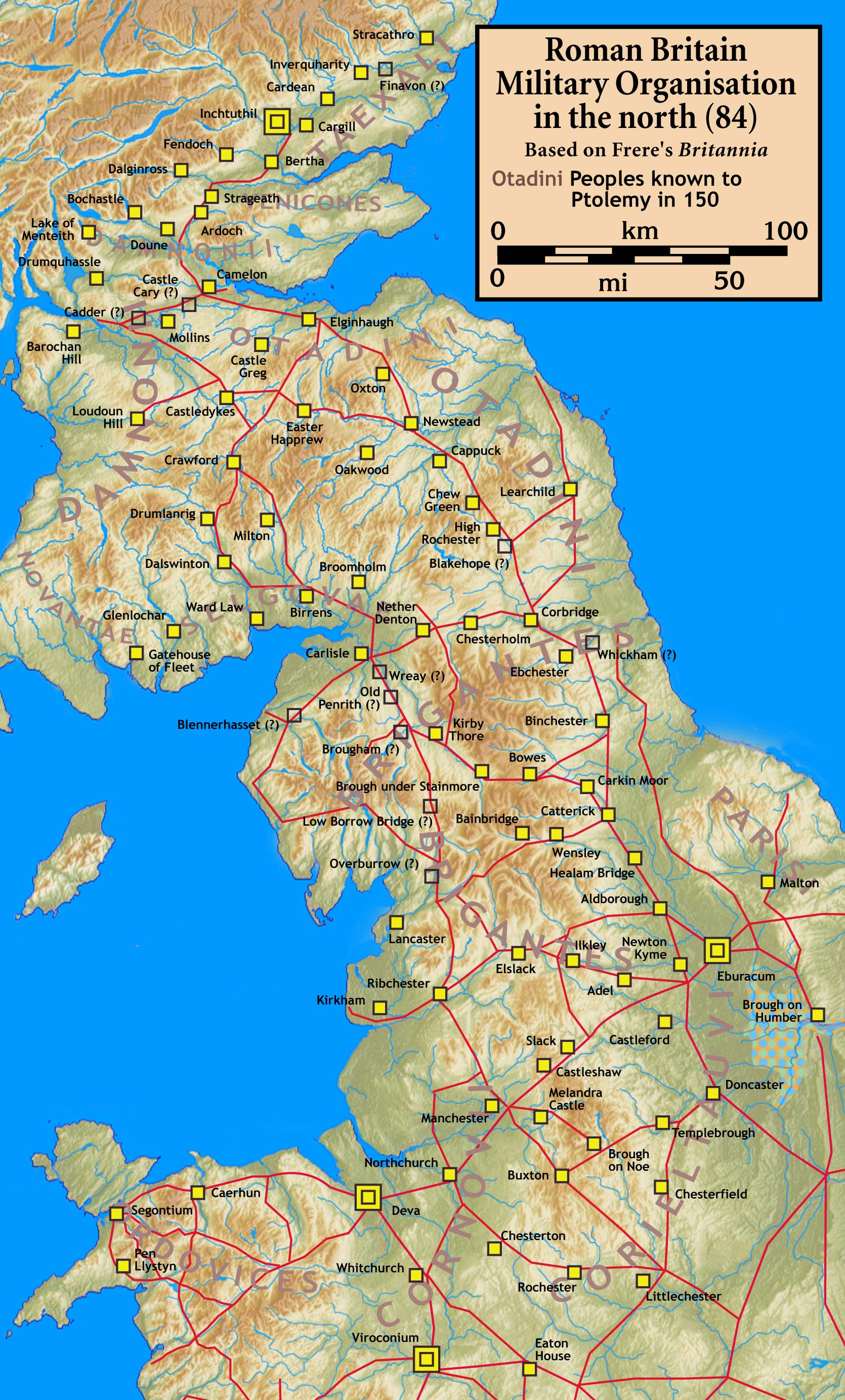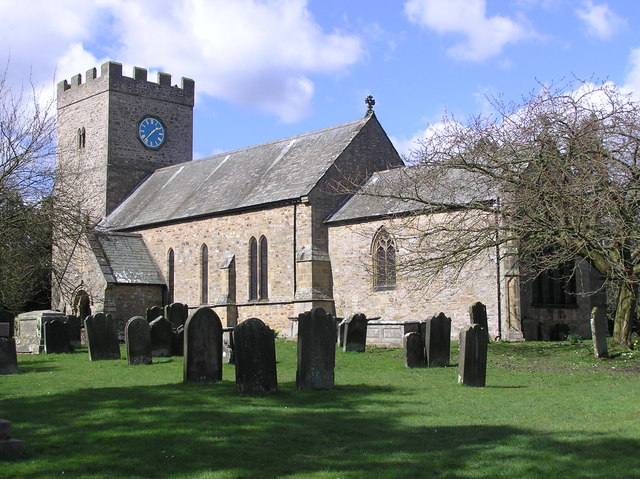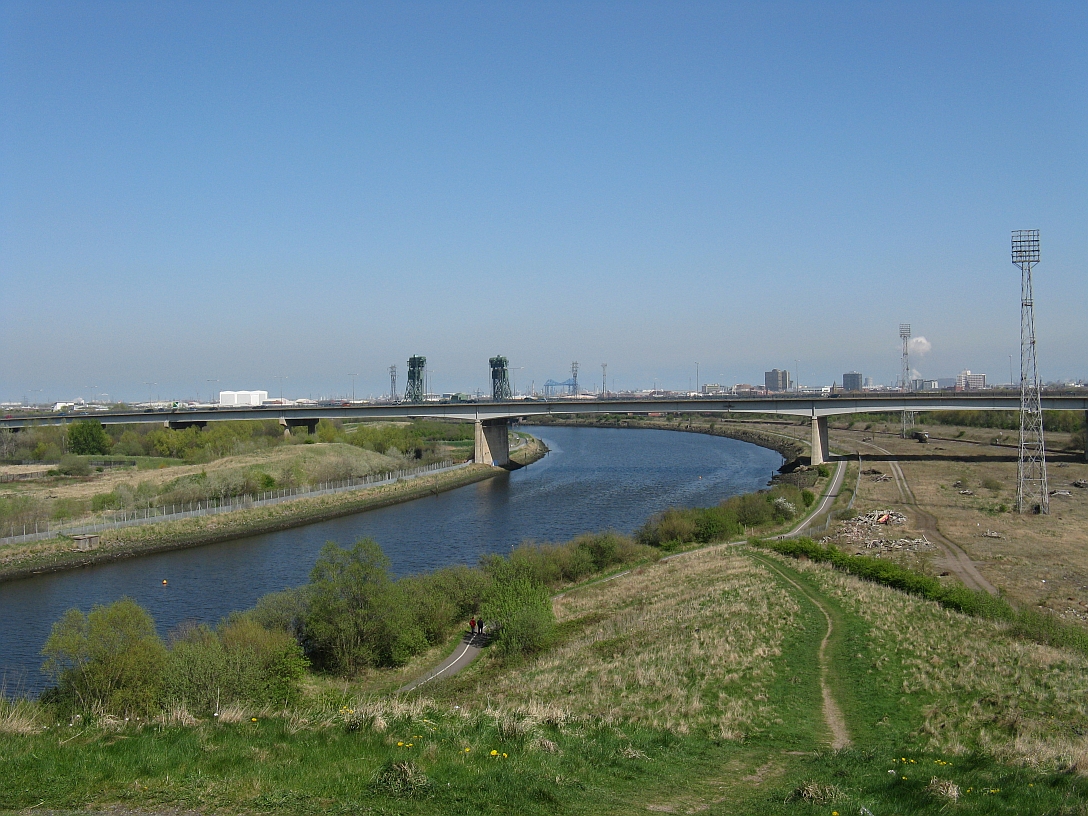|
Aldbrough St John
Aldbrough St John is a village and civil parish (called just Aldbrough) in the Richmondshire district in North Yorkshire, England. The parish has a population of 325 (2001 census), increasing to 392 at the 2011 Census. History In the Norse language Aldbrough means "Old Burh" or fortified stronghold. The St John suffix was added to the name in the 1930s by the Post Office to avoid confusion with the Aldborough near Boroughbridge. At one time Aldbrough St John had a "small castle". We know this from John Leland's account in 1540 that "There appere great ruines of a howse or litle castel at Albruch village, and thereby rennith a bekke. It standith a 2 mile south from Perse Bridg on Tese". Perse Bridg is now called Piercebridge 2 miles north of Aldbrough referred to above as Albruch. The village is west of Darlington, north of Richmond and north of junction 56 on the A1(M) motorway. The road north from junction 56 of the A1(M) is part of Dere Street and runs up to Pierceb ... [...More Info...] [...Related Items...] OR: [Wikipedia] [Google] [Baidu] |
2011 Census For England And Wales
A census of the population of the United Kingdom is taken every ten years. The 2011 census was held in all countries of the UK on 27 March 2011. It was the first UK census which could be completed online via the Internet. The Office for National Statistics (ONS) is responsible for the census in England and Wales, the General Register Office for Scotland (GROS) is responsible for the census in Scotland, and the Northern Ireland Statistics and Research Agency (NISRA) is responsible for the census in Northern Ireland. The Office for National Statistics is the executive office of the UK Statistics Authority, a non-ministerial department formed in 2008 and which reports directly to Parliament. ONS is the UK Government's single largest statistical producer of independent statistics on the UK's economy and society, used to assist the planning and allocation of resources, policy-making and decision-making. ONS designs, manages and runs the census in England and Wales. In its capacity as t ... [...More Info...] [...Related Items...] OR: [Wikipedia] [Google] [Baidu] |
Dere Street
Dere Street or Deere Street is a modern designation of a Roman road which ran north from Eboracum (York), crossing the Stanegate at Corbridge (Hadrian's Wall was crossed at the Portgate, just to the north) and continuing beyond into what is now Scotland, later at least as far as the Antonine Wall. Portions of its route are still followed by modern roads, including the A1 (south of the River Tees), the B6275 road through Piercebridge, where Dere Street crosses the River Tees, and the A68 north of Corbridge in Northumberland. Name The Roman name for the route is lost. Its English name corresponds with the post-Roman Anglo-Saxon kingdom of Deira, through which the first part of its route lies. That kingdom possibly took its name from the Yorkshire River Derwent. The term "street" derives from its Old English sense (from la, via strata), which referred to any paved road and had no particular association with urban thoroughfares. Portions of the road in Scotland were late ... [...More Info...] [...Related Items...] OR: [Wikipedia] [Google] [Baidu] |
Villages In North Yorkshire
A village is a clustered human settlement or community, larger than a hamlet but smaller than a town (although the word is often used to describe both hamlets and smaller towns), with a population typically ranging from a few hundred to a few thousand. Though villages are often located in rural areas, the term urban village is also applied to certain urban neighborhoods. Villages are normally permanent, with fixed dwellings; however, transient villages can occur. Further, the dwellings of a village are fairly close to one another, not scattered broadly over the landscape, as a dispersed settlement. In the past, villages were a usual form of community for societies that practice subsistence agriculture, and also for some non-agricultural societies. In Great Britain, a hamlet earned the right to be called a village when it built a church. [...More Info...] [...Related Items...] OR: [Wikipedia] [Google] [Baidu] |
Packhorse Bridge
A packhorse bridge is a bridge intended to carry packhorses (horses loaded with sidebags or panniers) across a river or stream. Typically a packhorse bridge consists of one or more narrow (one horse wide) masonry arches, and has low Parapet#Bridge parapets, parapets so as not to interfere with the panniers borne by the horses. Multi-arched examples sometimes have triangular Starling (structure), cutwaters that are extended upward to form pedestrian refuges. Packhorse bridges were often built on the trade routes (often called packhorse routes) that formed major transport arteries across Europe and Great Britain until the coming of the toll road, turnpike roads and canals in the 18th century. Before the road-building efforts of Napoleon, all Principal passes of the Alps, crossings of the Alps were on packhorse trails. Travellers' carriages were dismantled and transported over the mountain passes by ponies and mule, mule trains. Definition In the British Isles at least, the definitio ... [...More Info...] [...Related Items...] OR: [Wikipedia] [Google] [Baidu] |
East Layton
East Layton is a village and civil parish in the Richmondshire district of North Yorkshire, England, close to the border with County Durham and a few miles west of Darlington. The racehorse Horse racing is an equestrian performance sport, typically involving two or more horses ridden by jockeys (or sometimes driven without riders) over a set distance for competition. It is one of the most ancient of all sports, as its basic pr ... Crisp is interred there. Demographics East Layton, considered a parish, is situated a few miles west of the town of Darlington. In the 1870s, East Layton was described as :"township, Stan wick and Melsonby pars., North-Riding Yorkshire, 5½ miles N. of Richmond, 1072 ac., pop. 156. " by John Bartholomew. Today, East Layton has a population of 117, according to the 2011 census. History Church The parish is home to a Grade II listed Church, believed to have been constructed in 1895. It was given its listed title in 1969, similar to th ... [...More Info...] [...Related Items...] OR: [Wikipedia] [Google] [Baidu] |
Stanwick St John
Stanwick St John is a village, civil parish, former manor and ecclesiastical parish in the Richmondshire district of North Yorkshire, (formerly "North Riding" of Yorkshire), England. It is situated between the towns of Darlington and Richmond, close to Scotch Corner and the remains of the Roman fort and bridge at Piercebridge. Nomenclature The name 'Stanwick' is thought to be derived from the Old Norse word 'steinvegges', meaning "stone ways". It has been established that in 1225, Stanwick was known as 'Steinweg'; a document of that date concerning a dispute over church revenue, which led to the church being attacked and the vicar barricading himself inside, refers to "murder, fire and sacrilege within the church at Steinweg". Church of St John the Baptist Not much remains of the once thriving settlement at Stanwick except the Church of St John the Baptist, the parish church, which dates from the 13th century, although large sections of it were rebuilt during a major re ... [...More Info...] [...Related Items...] OR: [Wikipedia] [Google] [Baidu] |
Forcett
Forcett is a village in the Richmondshire district of North Yorkshire, England. It lies near the border with County Durham, on the B6274 road about 8 miles south of Staindrop. Nearby villages include Eppleby, Caldwell and Aldbrough. History The origin of the place-name is from the Old English words ''ford'' and ''set'' meaning fold by a ford and appears as ''Forset'' in the Domesday Book of 1086. In 1367, the manor was granted to Sir Walter Urswyk by John of Gaunt, Duke of Lancaster, Earl of Richmond, for Urswyk's valour at the Battle of Navarretta during the Hundred Years' War. Urswyk was later High Constable of Richmond Castle and Master Forester of the Forest of Bowland. Buildings St Cuthbert's Church is located in the centre of the village. On the edge of the village is Forcett Park in which stands Forcett Hall, a Palladian Palladian architecture is a European architectural style derived from the work of the Venetian architect Andrea Palladio (1508–1580). ... [...More Info...] [...Related Items...] OR: [Wikipedia] [Google] [Baidu] |
Eleanor Percy, Duchess Of Northumberland
Eleanor Percy, Duchess of Northumberland (1820–1911) was the wife of Algernon Percy, 4th Duke of Northumberland. Biography Elearnor was born on 22 October 1820, the daughter of Richard Grosvenor, 2nd Marquess of Westminster and Lady Elizabeth Mary Leveson-Gower. She married Lord Prudhoe (later 4th Duke of Northumberland) on 27 August 1842, and it was considered an excellent marriage since his older brother Hugh Percy, 3rd Duke of Northumberland was childless after 26 years of marriage. He was born 1792, and was thus 28 years her senior and 50 years old at the time of the marriage. Prudhoe succeeded to the title on 11 February 1847. There were no children of the marriage. The Duchess was widowed on 12 February 1865, and died on 4 May 1911, aged 90, at Stanwick Park in Stanwick St John in the Richmondshire district of North Yorkshire. For many details of her life see ''The Lost Stanwick Hall: remnants of the Duchess Eleanor of Northumberland, her time and people'' printed in Da ... [...More Info...] [...Related Items...] OR: [Wikipedia] [Google] [Baidu] |
River Tees
The River Tees (), in Northern England, rises on the eastern slope of Cross Fell in the North Pennines and flows eastwards for to reach the North Sea between Hartlepool and Redcar near Middlesbrough. The modern day history of the river has been tied with the industries on Teesside in its lower reaches, where it has provided the means of import and export of goods to and from the North East England. The need for water further downstream also meant that reservoirs were built in the extreme upper reaches, such as Cow Green. Etymology The name ''Tees'' is possibly of Brittonic origin. The element ''*tēs'', meaning "warmth" with connotations of "boiling, excitement" (Welsh ''tes''), may underlie the name. ''*Teihx-s'', a root possibly derived from Brittonic ''*ti'' (Welsh ''tail'', "dung, manure"), has also been used to explain the name ''Tees'' (compare River Tyne). Geography The river drains and has a number of tributaries including the River Greta, River Lune, River Balder, ... [...More Info...] [...Related Items...] OR: [Wikipedia] [Google] [Baidu] |
A66 Road
The A66 is a major road in Northern England, which in part follows the course of the Roman road from Scotch Corner to Penrith. It runs from east of Middlesbrough in North Yorkshire to Workington in Cumbria. Route From its eastern terminus between Redcar and Middlesbrough it runs past Stockton-on-Tees and Darlington mainly as two-lane dual-carriageway and single carriageway past Darlington, becoming motorway standard as the A66(M) shortly before meeting junction 57 of the A1(M). It shares the A1(M) route south to Scotch Corner, from where it continues west across the Pennines, past Brough, Appleby, Kirkby Thore, Temple Sowerby and Penrith until it reaches Junction 40 of the M6 motorway at Skirsgill Interchange, where traffic going towards Western Scotland turns onto the northbound M6. The A66 continues past Blencathra to Keswick and Cockermouth and on through the northern reaches of the Lake District before arriving at the coastal town of Workington. There is a short ... [...More Info...] [...Related Items...] OR: [Wikipedia] [Google] [Baidu] |
Roman Road
Roman roads ( la, viae Romanae ; singular: ; meaning "Roman way") were physical infrastructure vital to the maintenance and development of the Roman state, and were built from about 300 BC through the expansion and consolidation of the Roman Republic and the Roman Empire. They provided efficient means for the overland movement of armies, officials, civilians, inland carriage of official communications, and trade goods. Roman roads were of several kinds, ranging from small local roads to broad, long-distance highways built to connect cities, major towns and military bases. These major roads were often stone-paved and metaled, cambered for drainage, and were flanked by footpaths, bridleways and drainage ditches. They were laid along accurately surveyed courses, and some were cut through hills, or conducted over rivers and ravines on bridgework. Sections could be supported over marshy ground on rafted or piled foundations.Corbishley, Mike: "The Roman World", page 50. Warwick Press, ... [...More Info...] [...Related Items...] OR: [Wikipedia] [Google] [Baidu] |
A1(M)
A1(M) is the designation given to a series of four separate motorway sections in England. Each section is an upgrade to a section of the A1, a major north–south road which connects London, the capital of England, with Edinburgh, the capital of Scotland. The first section, the Doncaster Bypass, opened in 1961 and is one of the oldest sections of motorway in Britain. Construction of a new section of A1(M) between Leeming and Barton was completed on 29 March 2018, a year later than the anticipated opening in 2017 due to extensive archaeological excavations. Its completion linked the Barton to Washington section with the Darrington to Leeming Bar section, forming the longest A1(M) section overall and reducing the number of sections from five to four. In 2015 a proposal was made by three local government organizations to renumber as M1 the section of A1(M) between Micklefield and Washington, making this section a northern extension of the M1. Overview From London to S ... [...More Info...] [...Related Items...] OR: [Wikipedia] [Google] [Baidu] |







